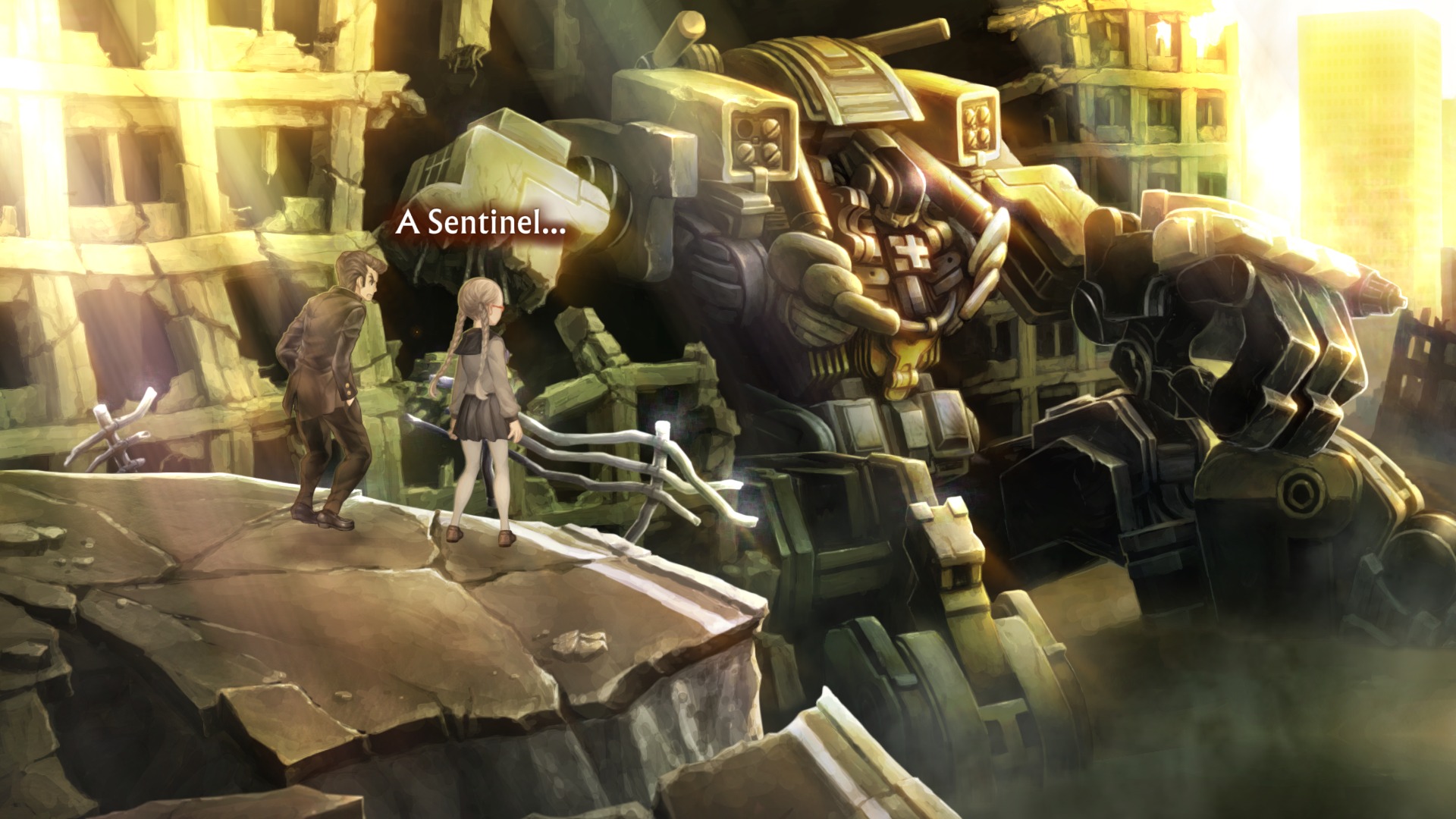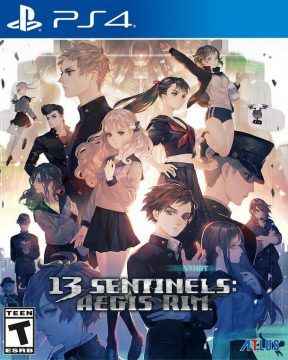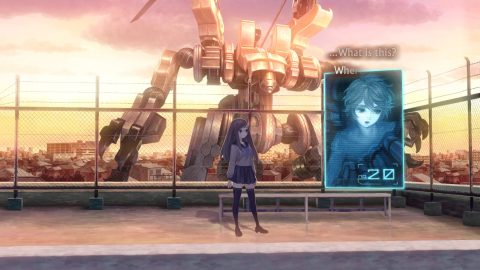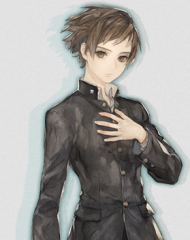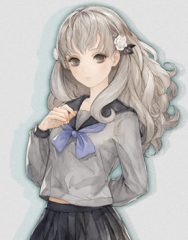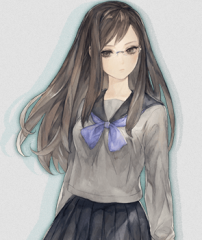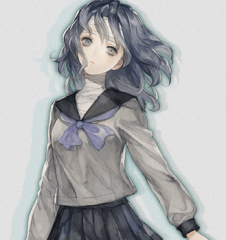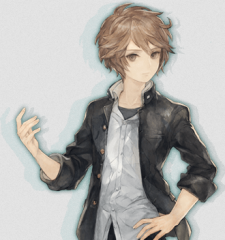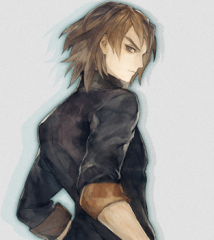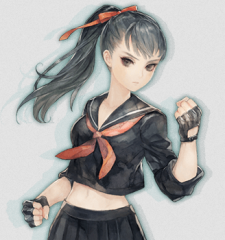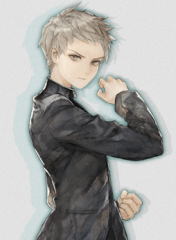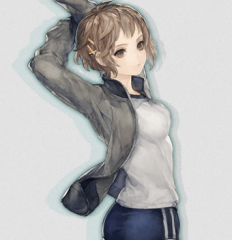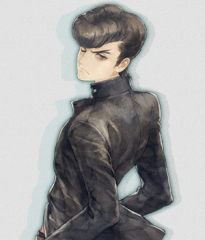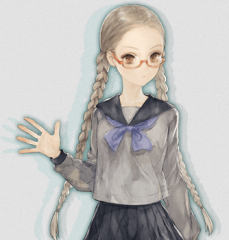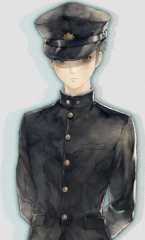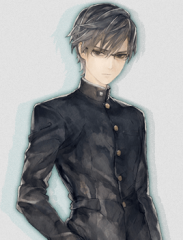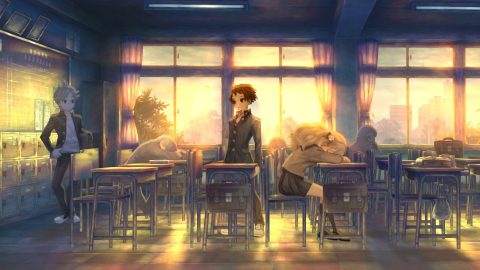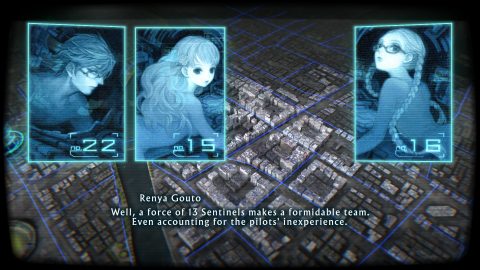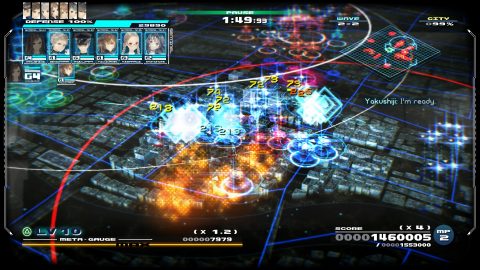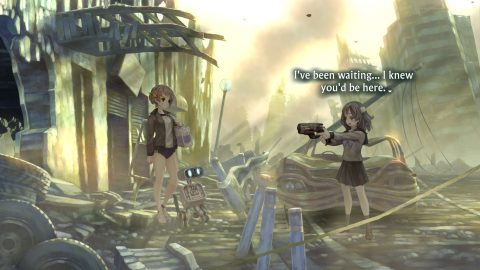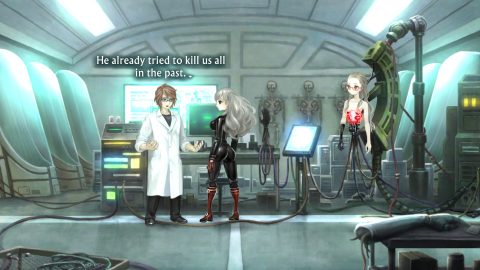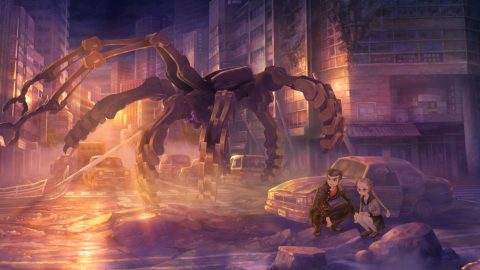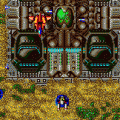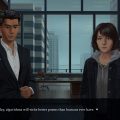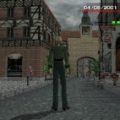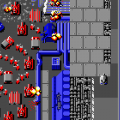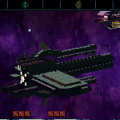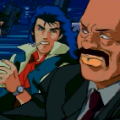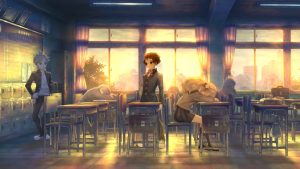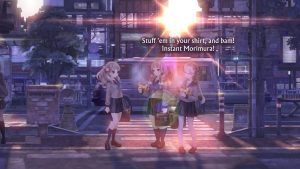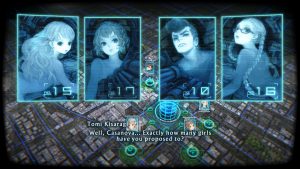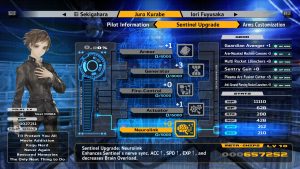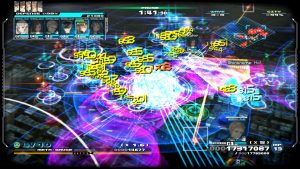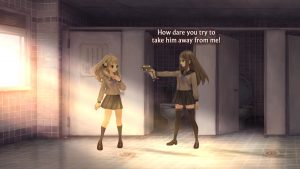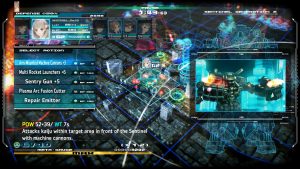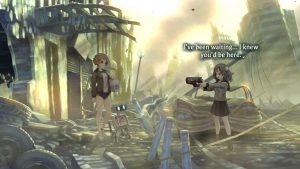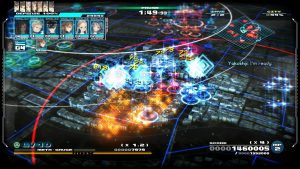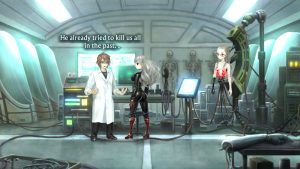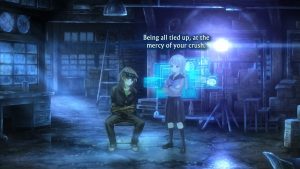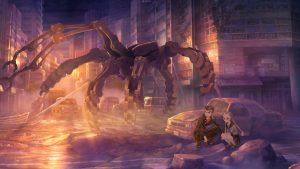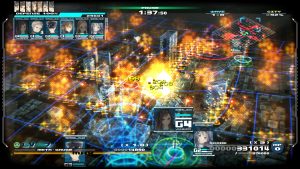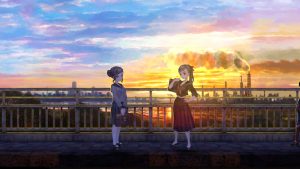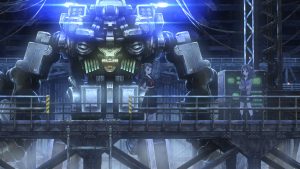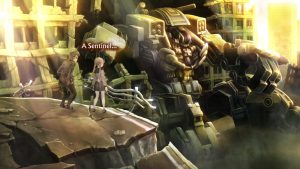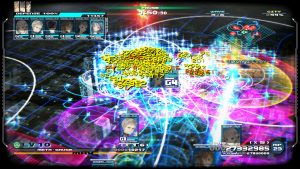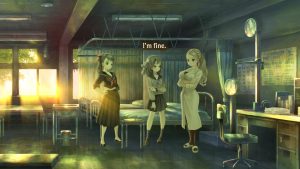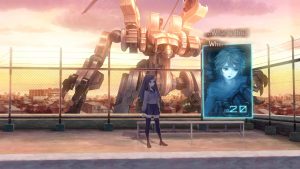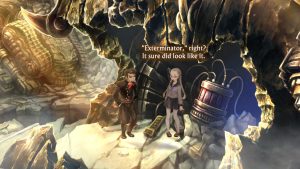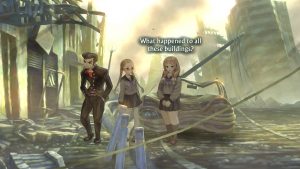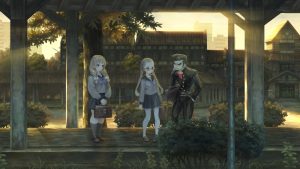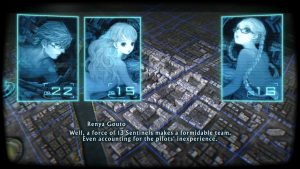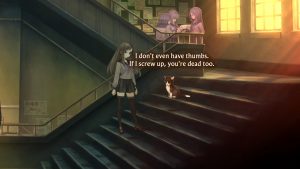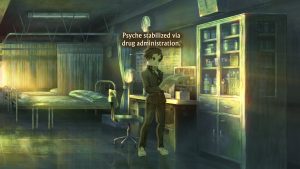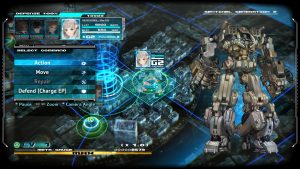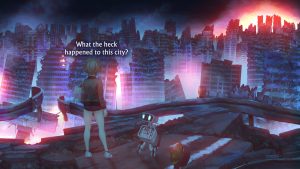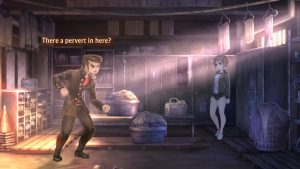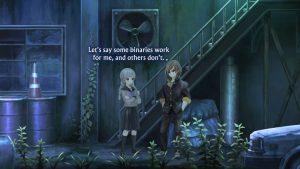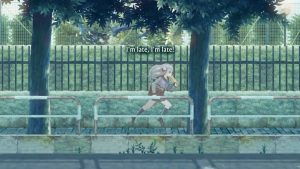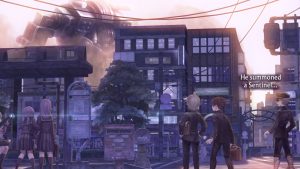Vanillaware as a company has had its existence defined through its gorgeous 2D artwork, as seen in games like Odin Sphere, Muramasa: The Demon Blade, and Dragon’s Crown. They’re mostly known for fantasy works, and many of their titles are action-RPGs, but their 2019 release 13 Sentinels: Aegis Rim shakes things up substantially. It’s a science fiction epic that spans across several time periods, focusing on thirteen high schoolers who band together to pilot giant mechas called Sentinels and save the world from monstrous invaders called kaiju. It’s also mostly an adventure game, focusing heavily on story, broken up with some real-time strategy segments, making for a title that looks like Vanillaware’s previous works but doesn’t play like them.
The concept is Tarantino-esque, not in that it mimics the director’s edgy style, but rather that it’s a loving tribute to the sci-fi movies and shows that director (and Vanillaware founder) George Kamitani enjoyed in his youth. Sometimes it borrows plots outright, sometimes it just borrows terminology, drawing elements from movies like E.T., The Terminator, The Matrix, and War of the Worlds, among many, many others. It’s all wrapped together in a story that’s equally shounen, with plenty of mecha action, and shoujo, with an emphasis on romantic entanglements.
The game is broken up into three sections: Remembrance, where you can play scenarios focused on the thirteen characters; Destruction, which is the combat section featuring real-time strategy missions; and Analysis, which is a database that unlocks various facts about the story that are filled in as they’re revealed. The Analysis section includes an Event Archive that puts all of the events for each character in chronological order, and the Mystery Files, a huge database of all of the key characters, places, and events in the story.
The Remembrance section is where you’ll spend most of the game, allowing you to experience the world through thirteen characters. There are five time periods featured in the story – 1945, 1985, 2025, 2065, and 2105 – focused entirely on a single city. However, most of the main narrative takes place in 1985, focusing on Sakura High School and its students.
Characters
Juro Kurabe
Juro is fascinated with science fiction stories, religiously consuming movies he’s rented or shows he’s taped off of TV. Things quickly get strange when he ends up summoning a gigantic Sentinel in the middle of his neighborhood.
Iori Fuyusaka
Iori suffers from insomnia and regularly nods off during class, where she has dreams of events that seem to be from a past life. She develops an immediate infatuation with Ei Sekigahara.
Megumi Yakushiji
Megumi comes from the year 2025, which has been destroyed by kaiju attack. Having time traveled to 1985, she ends up living with Juro, who has a crush on her. She is guided by a talking cat who instructs her to shoot “witches” with a mysterious gun. This ends up being like a Sailor Moon parody but played almost completely straight.
Ryoko Shinonome
Ryoko comes from the year 2065, which was also destroyed by the kaiju. She was gravely injured in the attack and suffers from huge memory loss, and can only function through the regular use of medication.
Shu Amiguchi
A rich playboy who lives alone in a fancy apartment. At night, he sees the vision of a pop star named Miyuki Inaba, who speaks to him through his television. He regularly hits on Yuki Takamiya even though she brushes off his advances.
Takatoshi Hijiyama
A Japanese soldier in World War II, he becomes obsessed with the scientist Tsukasa Okino (a feminine boy who presents as a woman) and follows him to the year 1985. Though he finds himself displaced in this new society, he develops an appreciation for yakisoba pan (sweet noodle bread).
Yuki Takamiya
A sukeban (delinquent girl) who transfers to Sakura High School as a spy. She’s a childhood friend of Natsuno Minami and investigates her disappearance.
Ei Sekigahara
A boy without a memory, who wakes up to find a murdered woman, and is being chased by mysterious men in black.
Natsuno Minami
An athletic girl who is also fascinated with science fiction. She discovers a cute little robot named BJ, which possesses the power of time travel, sending her off on an adventure.
Nenji Ogata
A delinquent with a heart of gold, who has a thing for Tomi Kisaragi. He is the wayward son of a major executive in the massive Shikishima Heavy Industries corporation. His chapter is taken almost directly from the movie Source Code, as he’s stuck in a time loop on a train, hunting for a way to escape.
Tomi Kisaragi
A flippant girl from 2025 and friend of Megumi Yakushiji, who also finds safety by time traveling to 1985. She sets out to investigate the cause of the kaiju attacks.
Keitaro Miura
A boy from 1945, who comes from the same town as Takatoshi Hijiyama, and also fights for the Japanese military during World War II. When his village is destroyed by kaiju, he jumps to 1985, where he meets up with Natsuno Minami, who he met during his time travels. He finds comfort in hamburg steak, which he mishears as “hemborger”.
Renya Gouto
A boy from the future who has far more knowledge of the kaiju attacks than any of the others. As a result, he’s one of the last stories the player can experience.
Rather than being presented from the first-person perspective as in a typical Japanese adventure game/visual novel, you can freely move around a given environment. However, you’re usually restricted to where you can go and what you can do, as you just need to run around and find the trigger that lets you proceed with the story. There’s no inventory but there is a functional equivalent called the Thought Cloud, which lets your character muse about various concepts, and also bring them up in conversation with others.
Most scenarios are extremely linear, so structurally, it’s not much different from a visual novel. Having to wander around the areas to find a way to advance does slow down the pacing, but this is made up for via the snappy dialogue. Plus, the ability to walk around the areas makes them feel more alive, making them much more dynamic than the static backgrounds in other adventure games.
And this is one incredible looking game. The character designs are very reminiscent of past Vanillaware games (though the art was handled by Yukiko Hirai and Emika Kida rather than George Kamitani), each one with distinct animations and flourishes to flesh out their individual personalities. While displayed from a side-scrolling perspective, the backgrounds are completely 3D, just modeled to make it look like a painting. There’s an incredible amount of detail put into each and every room; the effect of the sun shining through windows is a particularly nostalgic visual that the developers have a fondness for. Anytime you get an up-close view of a Sentinel or a kaiju, it looks absolutely incredible; it truly is a technical marvel in both animation and art direction. One curiosity, though: when piloting a Sentinel, the character shows up nude (though nothing explicit) on the communications portrait; the rationale for this is revealed by the ending, though it’s still just an excuse for the artist to draw naked teenagers.
Structurally, however, the stories are unusual because they’re broken up into small chunks of about eight episodes. You can’t quite play them in any order, though, as you’re often progression gated at certain points, requiring that you complete other stories or get far enough in the battle scenes. Technically, there’s no optimal order to play these in, though it might be more helpful to pick one that seems the most interesting, focus on that until you’re not allowed to follow it anymore, then move to a related character.
Oftentimes you’ll need to take a break for the main story to check out the Destruction section, where your characters will hop in their Sentinels to do battle with the kaiju. These are presented as real-time strategy tower defense segments, where you control six characters to defend a central Terminal from enemy onslaught. Characters can move across the field, though since enemies close in on the Terminal, most of your units can just stay put and attack at a distance. However, more heavily armored foes can prove resistant to your attacks, requiring some mecha units to get up close to use melee attacks. Once you’ve beaten enough enemies, then the mission ends.
As you progress through the game (both the main story and the combat segments) you get currency called Meta-chips, which let you unlock (and enhance) special movies and improve their stats. The Meta System function also unlocks other abilities, which can heal your mechas, reduce the damage to the terminal, and other useful things, though you can only use these a few times per battle. You’re graded after a mission based on performance, and there are specific bonus goals which unlock entries in the Mystery Files. In contrast to the lavishly illustrated scenarios in the main narrative, these combat sequences are much more abstract, with units presented in simple wireframes, and the terrain depicted with sparse detail. It’s quite ugly at first, though they work in presenting massive scale combat.
The biggest issue with the combat sequences is that the game seems to lack faith in them. The visuals make them feel like a cheap mini-game, and there’s no visual variation among the game’s thirty or so areas. At first, playing them seems almost optional, until you reach roadblocks in the main story, which has the unfortunate side effect of making them feel like an obligation, rather than something you’re supposed to enjoy. Chronologically, all of the battle scenes take place after the main scenario has concluded, preventing them from being tightly integrated into the story, like they would normally be in a strategy-RPG. It also has numerous balance issues, since you can just use the same tactics over and over, and certain weapons, like the hilariously overpowered sentry guns. There is an Easy mode if you just want to power through these, while the Normal mode is still trivial once you know what you’re doing.
But in spite of these issues, the battle segments do eventually get pretty fun, if mostly because of their scale and intensity. Between the hundreds of foes, the missile barrages, and the numerical damage indicators, things get very busy, and certain powerful moves can even cause the PlayStation 4 to chug, causing the action to slow down heavily. It’s reminiscent in the way that Treasure games like Bangai-O overwhelmed the system hardware just due to sheer density, despite using rather simple graphics.
These scenes also feature the best parts of the soundtrack, which was provided by Basiscape, the music studio founded by Hitoshi Sakimoto. While largely consisting of electronica, there’s some classic Sakimoto orchestral influence found in a lot of these tracks. The title theme is sung in a fictional language, like the Nier games, though this track and its melodies is weaved throughout a few others, with bone-chilling effects.
With some improved graphics, wider mission variety, and better balancing, the combat sequences could stand out as their own game. But since the playtime breakdown is about 75% plotline and 25% combat, it feels more like a diversion from the main scenario.
And the main scenario is…well, it’s a lot to take in.
The story will send you ping-ponging back and forth between both the many character stories and battle sequences, and there’s a whole lot to keep track of. There are thirteen playable characters, most with alternate identities and many with nicknames, plus several secondary characters, all across several time periods. Between all the different intersecting stories, it’s also hard to get a grasp on the timeline of events, so trying to follow everything is a bit chaotic, to put it lightly. But the game also doesn’t really expect you to understand all of it at once either, just enough to paint a picture to vaguely grasp what’s going on. It’s always an engrossing experience, even when it’s annoying that you can’t continue a particular story until accomplishing some other task.
The stories try their best to keep the player informed, cognizant that there may be several in-game hours between chapters, and the Thought Cloud helps reiterate key facts. It also depends on the scenario, but in many cases, the protagonist is essentially reliving the same day over and over, just with new knowledge that can send them down different plot branches. In most cases, the player is guided through the story automatically, though a few scenarios will catch you in loops if you make incorrect choices. Not only does it feel very dream-like, but it also doesn’t feel like there’s much plot progression.
The cast is generally a likeable bunch, and it’s a credit to the subtle character animations, the excellent writing, and the brilliant voice acting (in both English and Japanese) that make it a joy to spend time with them. But many also fall into singular stereotypes, with their other defining personality traits being their romantic interests or the type of food they like. There are thirteen protagonists and there’s only so much time you can devote to them, but their individual storylines also lack meaningful arcs, leaving them hollow. And while the romantic pairings are cute, they’re rather superficial. Ultimately, they feel more avatars used to explore the game’s heavy sci-fi concepts and intricate backstory, rather than actual characters.
And this becomes a substantial issue when it comes to the emotional impact of the game’s many, many twists and turns. Some of the twists are well-done – right off the bat, there are certain things that don’t entirely make sense, and even the characters will comment how they seem strange, so when the truth comes to light, it’s a clever revelation. But there are a whole lot of reveals that don’t make much sense when first shown, because they’re presented without context; most of them don’t even feel like twists. Early in the story, certain characters have visions of what are clearly past lives, and one of the major themes of the story is transhumanism. So a lot of twists are variations of “this character is related to another character in a previous life”, or “this character is a clone of another”, or “this character is actually an AI inhabiting a different body”. Most of the characters that actually drive the story are prior reincarnations of the main cast, but you’re only even given glimpses of them, despite how important they are to the narrative. And so much of the story is presented out of the order, so it’s hard to detangle that web, much less feel anything for the characters that are affected by it. Ultimately, the non-linear structure just doesn’t work for the mystery box storytelling it’s going for.
There are plenty of other stories out there that present out-of-order narratives but usually the climax re-contextualizes everything for the viewer, so that the truth is revealed in a big WHAM moment. 13 Sentinels does no such thing; in fact, there’s barely any climax at all. (The closest is the final battle, but the combat scenes are so narratively cut off from the main story that it doesn’t amount to much other than looking cool.) Instead, the game casts the player as a researcher, asking them to piece together through the Analysis section in order to tie everything together. It can be fun to play detective with all the numerous plot strands, but major revelations don’t have the same impact when you read about what they meant long after the fact.
By the time you’ve cleared everything, the broad outlines of the story are made clear, even if the finer details are murky. But at this point it’s also revealed how many of those details are irrelevant in the grand scheme of things; you can sit down and map out everything, but it doesn’t reveal any great truths, it just highlights how needlessly convoluted it is. In the end, despite its efforts to intertwine the stories of so many different characters, it’s just too unfocused to come together.
It tries, though. It really does. Kamitani clearly had great enthusiasm for the stories that seemingly defined his youth, and his passion really shows. It’s a gorgeous game that features an incredible world; the memorable characters and dizzying complexity will probably stick with the player long after they’ve completed it. The overall plot is incredibly cool, in spite of (or perhaps because of) the enormous amount of elements from other science fiction. But while Vanillaware may be brilliant artists, they come up short as storytellers, ending up with an ambitious narrative that has a lot of weighty ideas but lacks an emotional core.
